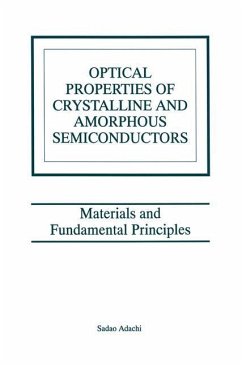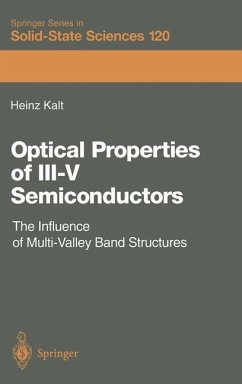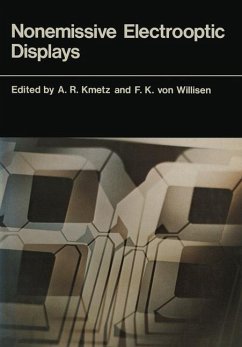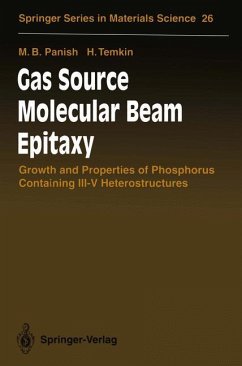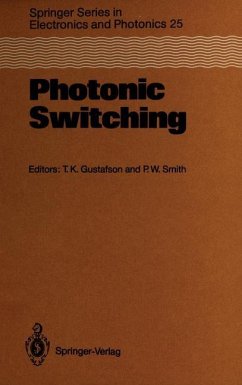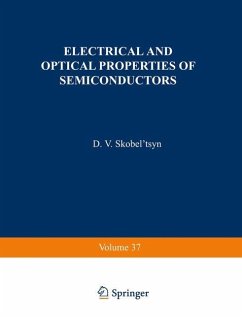
Electrical and Optical Properties of Semiconductors

PAYBACK Punkte
20 °P sammeln!
Radiative Recombination at Dislocations in Germanium.- I. Experimental Method.- II. Radiative Recombination in Germanium Crystals with Dislocation Densities of 103104 cm-2.- III. Radiative Recombination in Germanium Crystals with High (105-106 cm-2) Dislocation Densities. Radiative Recombination Mechanism.- IV. Determination of the Quantum Yield of the Recombination Radiation Associated with Dislocations.- Conclusions.- Literature Cited.- Impact Ionization of Impurities in Germanium at Low Temperatures.- I. Impact Ionization (Review).- II. Experimental Technique.- III. Results of Measurements ...
Radiative Recombination at Dislocations in Germanium.- I. Experimental Method.- II. Radiative Recombination in Germanium Crystals with Dislocation Densities of 103104 cm-2.- III. Radiative Recombination in Germanium Crystals with High (105-106 cm-2) Dislocation Densities. Radiative Recombination Mechanism.- IV. Determination of the Quantum Yield of the Recombination Radiation Associated with Dislocations.- Conclusions.- Literature Cited.- Impact Ionization of Impurities in Germanium at Low Temperatures.- I. Impact Ionization (Review).- II. Experimental Technique.- III. Results of Measurements and Discussion.- IV. Breakdown.- V. Influence of a Magnetic Field on the Electrical Conductivity of Germanium in Prebreakdown and Breakdown Fields.- VI. Electrical Conductivity of Germanium in Fields Higher than the Breakdown Value.- VII. Electrical Discharge in Very Thin Germanium Layers at Low Temperatures.- Appendix. Electrical Conductivity of Zinc-Doped Germanium.- Literature Cited.- Investigation of the Infrared Absorption Spectrum of Neutron-Irradiated Silicon.- I. Effects of Radiations on a Semiconducting Crystal. Review of the Main Papers on Radiation Defects in Silicon.- II. Experimental Method.- III. Experimental Results and Discussion.- Conclusions.- Literature Cited.- Electrical and Optical Properties of Electroluminescent Capacitors Based on ZnS:Cu.- I. Principal Mechanism of Electroluminescence.- II. Experimental Method.- III. Frequency Characteristics of an Electroluminescent Capacitor.- IV. Dependence of the Characteristics of an Electroluminescent Capacitor on Voltage.- V. Rectification of the Current by an Electroluminescent Capacitor.- Conclusions.- Literature Cited.






